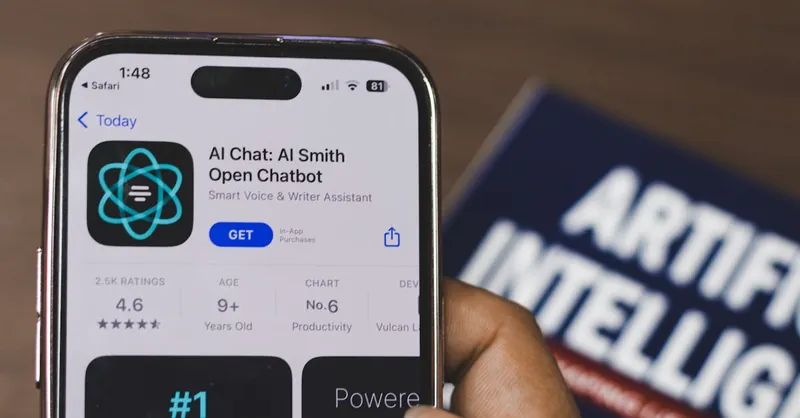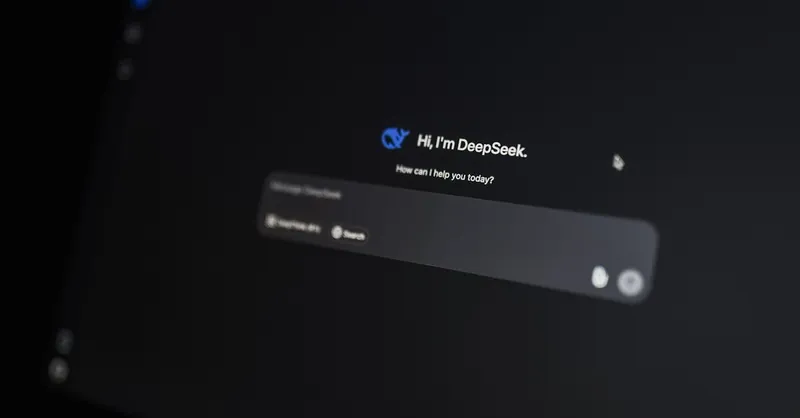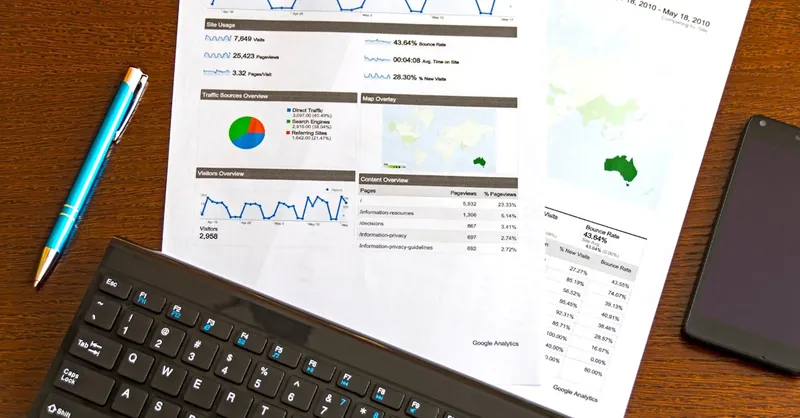How AI Is Transforming Personal Productivity in 2024
Category: Productivity & Automation
Unlocking New Levels of Personal Productivity with AI
In today’s fast-paced professional world, staying productive is a constant challenge. Whether you’re a busy entrepreneur juggling multiple projects, a tech-savvy professional seeking smarter workflows, or someone passionate about leveraging technology for better outcomes, understanding how AI transforms personal productivity is critical. You likely came here trying to find concrete ways AI can save you time, reduce cognitive load, and help you achieve more with less effort. Unlike generic productivity tips, this post dives deep into the revolutionary impact of AI-powered tools, automation techniques, and the latest technology trends that are reshaping how we work and manage daily tasks. You already know that productivity is key, but this article will show you exactly how AI can serve as your personal productivity partner—streamlining routine tasks, enhancing decision-making, and boosting creative output. Our insights are grounded in the latest developments and real-world applications, designed to help you implement effective AI strategies right away. If you want to get ahead and make AI an integral part of your productivity toolkit, keep reading; this is your roadmap to smarter work in 2024 and beyond.
- Unlocking New Levels of Personal Productivity with AI
- AI and Personal Productivity: An Overview
- Task Automation and Routine Streamlining
- AI-Powered Personal Assistants and Virtual Helpers
- Enhancing Decision Making with AI Insights
- AI in Creative and Knowledge Work
- Integrating AI with Productivity Software
- Overcoming Challenges and Ethical Considerations in AI-Driven Productivity
- Future Directions: AI Trends Shaping Personal Productivity
AI and Personal Productivity: An Overview
Over the past decade, Artificial Intelligence (AI) technology has rapidly evolved from a futuristic concept into an essential catalyst for enhancing personal productivity. Today, AI is no longer confined to complex industrial applications—it has become a core asset in everyday workflows, helping individuals and professionals unlock unprecedented levels of efficiency. By automating repetitive tasks, providing intelligent insights, and enabling personalized assistance, AI technology reduces cognitive overload and frees up valuable time to focus on high-impact activities.
Key benefits of AI-driven productivity tools include:
- Automation of Routine Tasks: From scheduling meetings and managing emails to data entry and expense tracking, AI-powered automation eliminates manual, time-consuming work.
- Smarter Decision-Making: AI algorithms analyze vast amounts of data to deliver actionable recommendations, helping you prioritize tasks and make evidence-based decisions effortlessly.
- Enhanced Creativity and Collaboration: With AI tools offering real-time writing assistance, idea generation, and project management support, you can amplify creativity and teamwork without added stress.
- Personalized Productivity: Adaptive AI systems learn your work patterns and preferences, creating custom workflows that optimize your daily routines for peak performance.
Emerging trends such as AI-powered virtual assistants, natural language processing interfaces, and machine learning–driven analytics are continuously reshaping how personal productivity is defined. As more intuitive and accessible AI tools become available, integrating these technologies into your day-to-day life is becoming not just advantageous but essential for staying competitive in the digital age. Understanding these developments equips you to leverage AI for smarter, faster, and more impactful work—empowering you to do more with less effort.

Image courtesy of Sanket Mishra
Task Automation and Routine Streamlining
One of the most transformative impacts of AI on personal productivity lies in its ability to automate repetitive tasks and streamline everyday routines. Tasks such as email management, scheduling, and data entry are notorious time sinks that drain mental energy and reduce focus on higher-value work. AI-powered solutions tackle these challenges head-on by handling these routine activities efficiently and intelligently, freeing up your time to concentrate on strategic priorities.
For example, AI-driven email assistants can automatically sort, prioritize, and even draft responses to your inbox, significantly reducing the time spent on email overload. Similarly, AI scheduling tools analyze your calendar preferences, work habits, and availability to automatically arrange meetings, avoiding back-and-forth communications. When it comes to data entry, machine learning algorithms can accurately extract and input information, minimizing human error and accelerating workflows. By automating these mundane yet essential tasks, AI not only boosts productivity but also helps reduce cognitive load, making your workday more focused and less stressful.
Key benefits of task automation include:
- Increased Efficiency: AI completes repetitive tasks faster and with higher accuracy than manual efforts.
- Enhanced Time Management: Automating routine processes frees up hours previously lost to administrative work.
- Improved Focus: Less distraction from menial tasks allows you to concentrate on creative and strategic initiatives.
- Consistent Workflow: Automation ensures routine jobs are done uniformly, reducing bottlenecks caused by human fatigue or oversight.
Harnessing AI for task automation and routine streamlining is essential for anyone looking to optimize their personal productivity in 2024. As AI continues to evolve, these tools will become even more seamless, adaptive, and integrated into our daily workflows—making it not just possible but imperative to work smarter, not harder.

Image courtesy of Thirdman
AI-Powered Personal Assistants and Virtual Helpers
AI-powered personal assistants and virtual helpers have rapidly become indispensable tools for enhancing personal productivity. Platforms like ChatGPT, Siri, Google Assistant, and Microsoft Cortana utilize advanced natural language processing (NLP) and machine learning algorithms to understand and execute complex commands, making daily workflow management more intuitive and efficient. These virtual assistants go beyond simple voice commands—they proactively organize schedules, set reminders, answer queries, and even help draft emails or reports, effectively acting as an extension of your cognitive capabilities.
By integrating AI personal assistants into your routine, you can benefit from:
- Seamless Task Management: Automatically create and update to-do lists, prioritize tasks based on deadlines and importance, and receive timely notifications to stay on track.
- Time Optimization: Instantly schedule meetings, coordinate calendars across multiple platforms, and suggest optimal time slots by analyzing your availability and preferences.
- Proactive Workflow Support: Get context-aware suggestions, such as recommending follow-up actions after meetings or flagging urgent emails, to minimize overlooked tasks.
- Enhanced Information Access: Quickly retrieve relevant data, documents, or answers to questions with simple conversational queries, reducing the time spent searching through files or browsing the web.
What sets AI virtual helpers apart is their ability to learn and adapt to individual user behaviors. Over time, they develop a personalized understanding of your routines, priorities, and communication style, enabling smoother interactions and more relevant assistance. This continually evolving intelligence helps you stay organized, reduce stress, and ultimately accomplish more with less effort. As AI assistants become more sophisticated and deeply integrated across devices and platforms, they are fast transforming from helpful tools into essential productivity partners for professionals everywhere.

Image courtesy of Matheus Bertelli
Enhancing Decision Making with AI Insights
Making informed decisions is at the heart of productivity, both personally and professionally. AI-powered analytics tools excel at sifting through vast and complex datasets to identify patterns, trends, and anomalies that might otherwise go unnoticed. By leveraging machine learning and advanced algorithms, these AI tools provide actionable insights that enable you to make faster, smarter, and more confident decisions.
Whether you're managing projects, optimizing workflows, or planning long-term strategies, AI-driven decision support helps by:
- Analyzing Data Patterns: AI systems process historical and real-time data to detect meaningful correlations and forecast outcomes, allowing you to anticipate challenges and opportunities.
- Prioritizing Tasks Based on Impact: By evaluating various factors such as deadlines, resource allocation, and potential ROI, AI recommends which tasks or projects deserve immediate attention.
- Reducing Cognitive Bias: Automated insights from unbiased algorithms help counteract human decision-making errors caused by emotion or incomplete information.
- Providing Scenario Modeling: AI simulations enable you to test different strategies or choices before implementation, revealing potential risks and benefits in a controlled environment.
For example, AI-enhanced dashboards summarize complex data into intuitive visualizations, highlighting key performance indicators and trends so you can quickly grasp essential information. Dedicated tools can track your productivity patterns or analyze market data to recommend personalized actions tailored to your goals and environment.
By integrating AI insights into your decision-making workflow, you not only save time on manual analysis but also gain a competitive edge through evidence-based strategies. This shift from intuition-based to data-driven decision-making is essential to boosting personal productivity and achieving sustainable success in today’s data-intensive world.

Image courtesy of AS Photography
AI in Creative and Knowledge Work
Artificial Intelligence is revolutionizing creative and knowledge-driven tasks by providing cutting-edge tools that significantly enhance ideation, content creation, and research processes. Whether you are a writer, designer, marketer, or knowledge worker, AI-powered applications are enabling you to unlock new levels of productivity by accelerating brainstorming, automating content generation, and streamlining complex research.
Automated Content Generation
AI technologies like natural language generation (NLG) enable rapid production of high-quality written content, from blog posts and marketing copy to reports and emails. Tools powered by advanced language models can draft, edit, and even optimize text based on desired tone, style, or SEO parameters. This reduces the time spent on initial drafts and repetitive writing tasks, allowing creators to focus on higher-value creative decisions.
Intelligent Idea Brainstorming and Research Assistance
AI-powered brainstorming tools use generative models to suggest ideas, topics, and creative directions, overcoming writer’s block or creative fatigue. These systems analyze vast datasets and trend insights to provide fresh perspectives tailored to your project goals. Additionally, AI research assistants help synthesize and summarize information from multiple sources, extracting key insights, verifying facts, and organizing data efficiently. This makes knowledge work faster and more accurate, facilitating well-informed decision-making without the usual manual overload.
Key benefits include:
- Faster Content Production: Automate first drafts and generate topic ideas rapidly.
- Enhanced Creativity: Leverage AI suggestions that spark innovative thinking.
- Improved Research Efficiency: Quickly gather, filter, and summarize large volumes of information.
- SEO-Optimized Outputs: AI tools can help tailor content for better search engine visibility, maximizing reach and impact.
By integrating AI into creative workflows, professionals can achieve higher productivity without compromising quality, making AI an indispensable partner for knowledge work in today’s competitive digital landscape. Embracing these AI capabilities ensures you stay ahead by producing compelling, data-driven, and creative outputs faster and with greater precision.

Image courtesy of Tima Miroshnichenko
Integrating AI with Productivity Software
The seamless integration of AI into popular productivity software is rapidly transforming the way individuals and teams optimize workflows and enhance collaboration. Leading project management platforms, note-taking apps, and communication tools now embed AI-driven features that automate routine operations, offer intelligent suggestions, and facilitate smarter task coordination. This fusion of AI capabilities with everyday productivity tools creates a unified environment where users can focus on creativity and strategic work rather than administrative overhead.
AI in Project Management Tools
AI integrations in project management software—such as Asana, Trello, and Monday.com—enable automated task prioritization, deadline forecasting, and resource allocation. These platforms use AI algorithms to analyze historical project data, team performance metrics, and workload distribution to recommend optimal scheduling and highlight potential bottlenecks before they impact progress. This predictive intelligence allows teams to proactively adjust plans, ensuring timely delivery and balanced workloads.
AI-Enhanced Note-Taking and Knowledge Management
Note-taking applications like Evernote, Notion, and Microsoft OneNote increasingly incorporate AI to automatically organize notes, extract key information, and generate summaries. AI-powered search functionalities make retrieving specific content faster and more accurate by understanding context and intent, rather than relying on simple keyword matching. Furthermore, intelligent tagging and linking features help transform scattered information into an interconnected knowledge base, improving both personal productivity and team knowledge sharing.
Optimizing Collaboration with AI
Collaboration platforms such as Slack and Microsoft Teams leverage AI to streamline communication and boost team efficiency. AI-powered chatbots assist with real-time task updates, meeting summaries, and follow-up reminders, reducing missed information and enhancing accountability. Moreover, natural language processing (NLP) algorithms in these tools analyze conversational data to surface action items and sentiment trends, enabling managers to better understand team dynamics and address issues proactively.
Key benefits of integrating AI with productivity software include:
- Workflow Automation: Reduce manual input and speed up repetitive processes within familiar interfaces.
- Enhanced Task Prioritization: Gain AI-driven insights into which tasks require immediate attention, improving time management.
- Improved Information Retrieval: Find data and documents faster through AI-powered semantic search and content summarization.
- Smarter Team Collaboration: Automate communication workflows and maintain clarity on project status without lengthy meetings or emails.
By embedding AI capabilities directly into the productivity tools you already use, these integrations drive a more cohesive, intelligent workflow ecosystem. This not only elevates individual output but also amplifies collective team performance, making AI an indispensable element in modern productivity strategies for 2024 and beyond.

Image courtesy of Edmond Dantès
Overcoming Challenges and Ethical Considerations in AI-Driven Productivity
While AI-powered tools revolutionize personal productivity, it is crucial to address common challenges and ethical considerations that arise from increased reliance on automation. One significant concern is overdependence on AI, which might lead to skill degradation or complacency, reducing critical thinking and problem-solving capabilities. Balancing AI assistance with human judgment ensures that automation remains a productivity enhancer rather than a crutch.
Navigating Data Privacy and Security
AI solutions typically process vast amounts of personal and professional data to deliver tailored productivity insights. This raises important questions about data privacy, ownership, and protection. Ensuring that AI tools comply with rigorous security standards, data encryption practices, and transparent user consent policies is essential to safeguard sensitive information from breaches or misuse. Opting for platforms with clear privacy policies and robust data governance can help mitigate risks associated with AI adoption.
Maintaining Human Oversight in Automation
Despite AI’s ability to automate routine tasks and provide decision support, human oversight remains indispensable. Automated systems are not infallible—they can inherit biases from training data, misinterpret context, or generate erroneous outputs. Maintaining accountability by regularly reviewing AI-generated results and applying critical evaluation prevents mistakes and preserves the quality of outcomes. This human-in-the-loop approach ensures that AI complements rather than replaces nuanced human expertise.
Ethical AI Use for Sustainable Productivity
Ethical use of AI in productivity tools also involves considerations such as:
- Transparency: Understanding how AI algorithms make decisions boosts trust and user confidence.
- Bias Mitigation: Proactively identifying and correcting biases in AI systems promotes fairness and inclusivity.
- User Empowerment: Designing AI interfaces that augment human capabilities without overwhelming or confusing users enhances adoption.
- Social Impact Awareness: Considering how AI-driven productivity gains affect workforce dynamics encourages responsible technology integration.
By acknowledging these challenges and embedding ethical practices, individuals and organizations can harness AI’s transformative productivity potential sustainably and responsibly. This balanced approach not only maximizes efficiency but also preserves trust, privacy, and integrity in your AI-empowered productivity journey.

Image courtesy of Markus Winkler
Future Directions: AI Trends Shaping Personal Productivity
As AI technology continues to advance at an unprecedented pace, the future of personal productivity is poised for even more profound transformation. Emerging AI trends are focusing on creating increasingly intuitive, context-aware, and proactive productivity systems that anticipate user needs and seamlessly integrate into everyday workflows. These innovations promise to empower individuals to work smarter, manage time more effectively, and maintain higher levels of focus and creativity.
Anticipatory and Contextual AI Assistants
Next-generation AI personal assistants will go beyond reactive task management by leveraging deep context awareness and predictive analytics. These assistants will proactively suggest actions, schedule adjustments, and resource allocations based on real-time analysis of work habits, priorities, and environmental factors. For instance, AI could automatically detect when you are overloaded and recommend task delegation or breaks, helping to optimize mental energy and prevent burnout.
Integration of AI with Augmented Reality (AR) and Wearables
The fusion of AI with AR and wearable technology will introduce new productivity paradigms by delivering AI insights and task support directly within your physical environment. Imagine AI-driven visual overlays that provide instant data summaries during meetings or smart notifications on your wrist that help you stay focused by filtering distractions. This hands-free, context-rich interaction model enhances multitasking capabilities and transforms how individuals engage with digital tools throughout the day.
Adaptive Learning and Personalization at Scale
Future AI productivity tools will use advanced machine learning algorithms to continuously learn from your evolving work patterns and preferences, delivering hyper-personalized workflows that adapt dynamically. This means your productivity system will not only automate repetitive tasks but will also tailor recommendations on work techniques, optimal focus intervals, and creative strategies that suit your unique style and goals.
Collaborative AI for Team Productivity
Increasingly, AI will facilitate seamless collaboration by mediating team workflows, analyzing communication patterns, and optimizing project dynamics in real time. AI-driven collaboration platforms will automatically summarize meetings, assign tasks based on individual strengths, and predict project risks, enabling teams to achieve higher productivity through smarter coordination and shared intelligence.
In summary, the future of AI in personal productivity revolves around creating smarter, more anticipatory, and fully integrated ecosystems that complement human capabilities. By staying informed on these evolving AI trends and embracing innovative tools as they emerge, individuals can unlock new levels of efficiency, focus, and creativity—ensuring that productivity gains keep pace with the accelerating demands of modern work life.

Image courtesy of Matheus Bertelli
